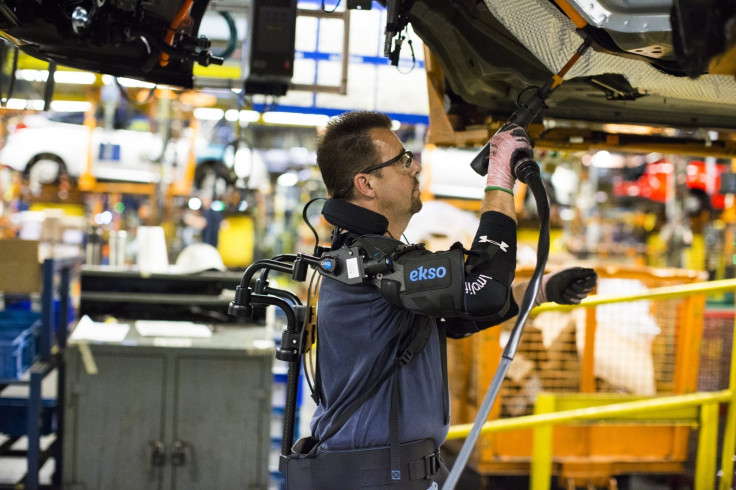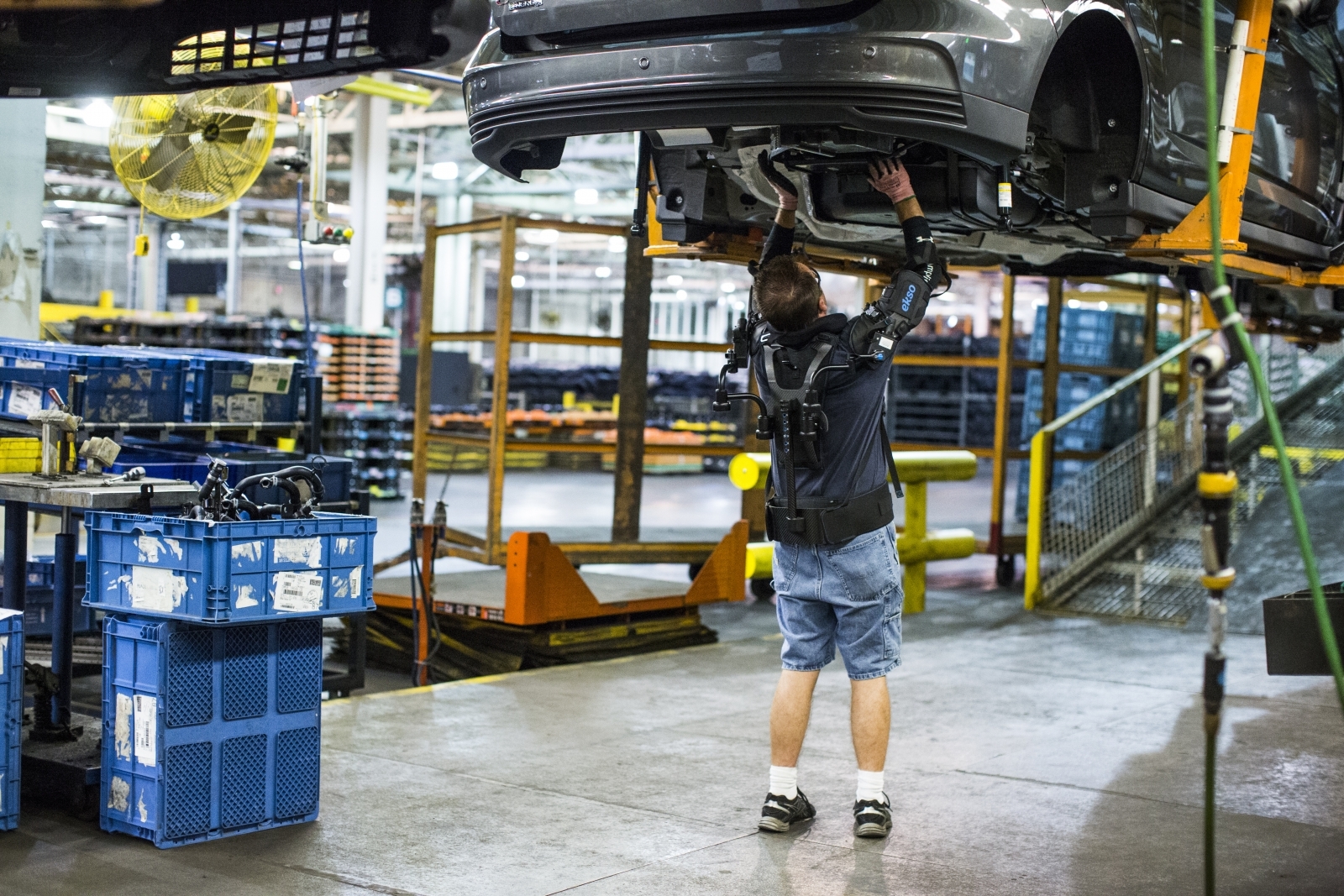Ford workers get fitted with exoskeletons to protect them from injury
Workers sometimes repeat the same action up to 4,600 times a day.

Car giant Ford has announced it will equip workers with an exoskeleton to help protect them from injuries caused by repetitive movements.
In a press release published on Thursday (9 November), Ford said workers have to lift their arms overhead around 4,600 times per day. The new exoskeleton, which would be just for the upper-body, will lessen the chance of fatigue and strain. The futuristic work wear is the result of a partnership between Ford and Esko Bionics.
The "EksoVest" can be worn by workers between five feet and 6 feet 4. It will add a maximum of 15 pounds of strength to each arm. It will be tested in two plants in the US and before moving to sites in Europe and South America.
Ford Michigan plant worker Paul Collins said there was a genuine need for the equipment. "When I get home my back, neck and shoulders usually hurt," Collins said. "Since I started using the vest, I'm not as sore, and I have more energy to play with my grandsons when I got home."
Health and safety figures show Ford has made a conscious decision to decrease worker fatigue in the past decade. Between 2005 and 2016, there was an 83% drop in the number of incidents that required a worker to have time off, be given restricted duties or be transferred. Vice president Jimmy Settle said the health and safety of Ford's workers has always been the company's "highest priority". "With proven success at the piloted locations, we look forward to expanding this technology to our other Ford manufacturing facilities," Settle said.



Ford recently announced a joint venture with four other manufacturers to install ultra-fast electric car charging stations across Europe. The collaboration, which is entitled IONITY, will have stations offering charge rates of 350kW. Tesla leads the way for charging speeds at the moment at 120kW. Typical electric car charges sit at around 50kW.
The company officially revealed the plans in November 2016, but released new information on 3 November showing the first stations would be built in Germany, Norway and Austria. In an open statement, the company said 20 stations would be open to the public by the end of 2017.






















